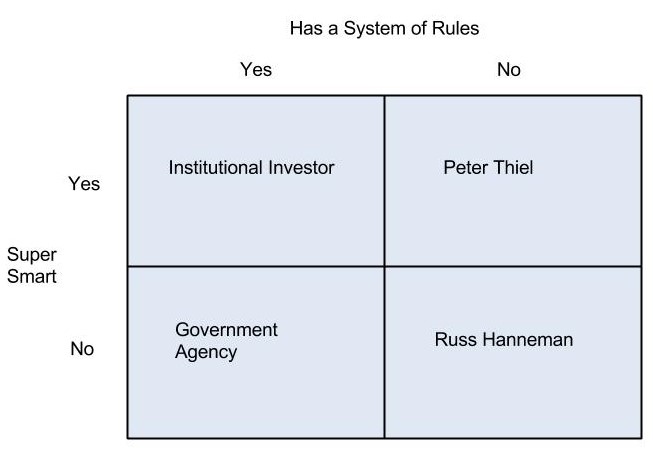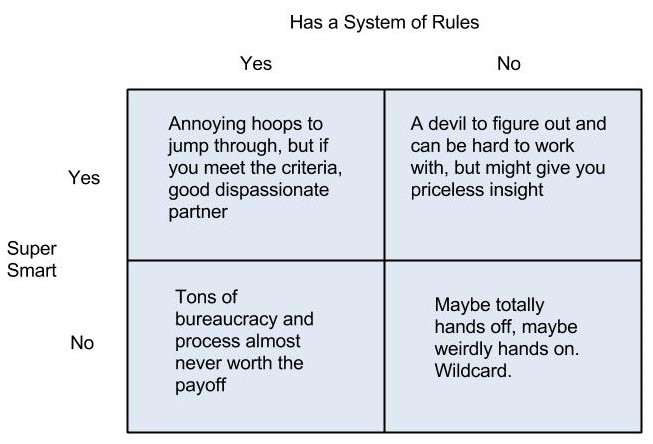People argue for tenure as a way to allow risk taking, bold explorations into controversial ideas, and new frontiers in academia. Without knowing their job can never be lost, how would professors have the incentive to take risks? And after all, even if many don’t pay off, the most important advances come from big risks.
Any time you’re in a non-market or highly distorted market, it’s hard to know what really works and what doesn’t since genuine signals are absent. Higher education is not even close to a functioning free market industry, so in order to assess the merit of claims about the value of tenure we ought to look elsewhere.
If tenure is really effective we should see it in other areas where risk taking and controversial advocacy are necessary.
It turns out we don’t really see it anywhere. In a genuine market, it’s not used as a mechanism for incentivizing risk-taking behavior, even where such behavior is arguably far more valuable even than it is an academia.
Entrepreneurs do not have tenure. Their risk has no subsidy or backstop except the safety net of their own skill and ability to earn a living elsewhere if the venture fails. Raising capital from an investor is one way to create the space necessary to experiment with bold ideas, but investors fight to ensure the opposite of tenure. They want seats on the board and the freedom to vote the founder out.
Inventors and artists need to explore wild, crazy, unthinkable ideas. Yet tenure is not common in any private sector research labs or the entertainment industry and certainly not in the garages and basements of individual creators. Intellectual property laws can provide a kind of hedge against risk for the tiny percentage of creators with the means to gain and defend IP, but on net IP actually increases the risk to inventors and artists (when other people gain patents and sue). Even if IP is gained, it protects the creation, which still has to sell to consumers, it doesn’t ensure an income for the creator.
What about CEOs? Especially in large publicly traded companies, CEOs need to be free to take major risks. They need to alter the brand, company culture, product lines, production processes, and anything else that might be inhibiting growth. CEOs need to advocate crazy ideas and bring bold new visions to fruition, with no guarantee whatsoever they will work or be well received by customers, employees, or investors. Billions of dollars and thousands of careers are on the line. Do boards offer them tenure as a way to ensure they are properly incentivized to make unpopular decisions or advance bold ideas?
Never.
But the need for such protection is real. An incentive structure too hard on failed risk-taking would be hugely detrimental. Instead of the beloved tenure, something else has emerged in the market. The despised “Golden Parachute”.
CEOs of large companies get really nice compensation packages, even if they get fired or the company tanks. This is a hugely valuable tool. Without it, the CEO role would be undesirable, and bold changes would almost never occur. If they know they won’t be left out in the cold after a risky idea fails, they’re more likely to try it. Additionally, if the previous CEO wasn’t impoverished for failure it will make the search for a high-quality new CEO far easier. No one wants to work for a place that might destroy them if things don’t work out.
The huge advantage the golden parachute has over tenure is that it protects the individual risk taker without letting them bring down the quality of the institution. Tenure for CEOs would be a disaster. Boards would be stuck with bad CEOs for life, embarrassing the company and making everyone suffer. Golden Parachutes, in contrast, allow for a speedy dismissal of a bad executive before they bring down the firm, but still create an incentive structure for risk-taking on the part of CEOs.
While some level of protection from catastrophic failure or public opinion is valuable for encouraging risk-taking and innovation in some fields, tenure seems an inferior method than what emerges in the market.



